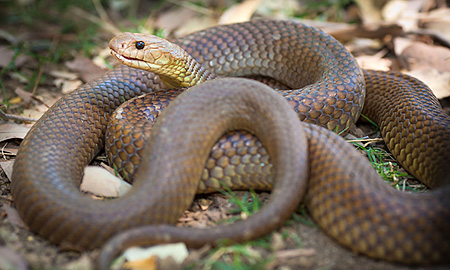Introduction
Snake attacks are a serious medical emergency that Additional resources can occur in various atmospheres, specifically in regions where snakes prevail. In Australia alone, there are countless types of venomous serpents such as the Tiger Snake, Eastern Brown Serpent, and King Brown Serpent. Recognizing how to efficiently handle serpent bites is vital for any individual who hangs around outdoors or lives in backwoods. This short article will explore comprehensive emergency treatment monitoring methods for serpent attacks and outline best methods for reacting to these incidents.
First Help Management of Snake Bites: Best Practices for each Situation
When managing a serpent bite, the initial action can considerably impact the target's end result. Immediate activity is crucial due to the fact that quick clinical intervention frequently determines the extent of injury or survival rate. Below are vital first aid first aid snake bite australia principles to remember:

Understanding Serpent Species and Their Habitats
Tiger Snakes and Their Habitat
Tiger serpents (Notechis scutatus) are among Australia's most infamous poisonous serpents because of their aggressive nature and powerful venom.
- Habitat: They normally populate coastal areas, marshes, and locations with dense vegetation like marshes and swamps. Risks: Awareness of neighborhood tiger snake environments can minimize the threat of coming across one unexpectedly.
Eastern Brown Snakes: A Substantial Threat
The Eastern Brown Serpent (Pseudonaja textilis) is one more extremely poisonous species found throughout eastern Australia.
- Habitat: This snake grows in metropolitan areas, farming lands, and grasslands. Behavior: Understood for its quick strikes when endangered, recognizing its behavior may assist alleviate encounters.
Recognizing Signs of Snake Bites
Identifying signs early on can boost chances of efficient treatment:
Local Symptoms:- Pain and swelling around the bite site Discoloration or bruising
- Nausea or vomiting Difficulty breathing Signs of shock (e.g., light skin, quick heart beat)
First Help Protocols for Certain Snake Bites
First Help for Tiger Snake Bite
In case of a tiger snake bite:
Stay tranquility; maintain still. Call emergency situation solutions immediately. Immobilize the influenced arm or leg making use of a splint if available. Do not try to draw out venom or apply ice.First Help for Eastern Brown Snake Bite
For an eastern brownish serpent bite:
Keep calmness; comfort the victim. Call emergency situation solutions without delay. Position them easily while preventing movement. Mark the edges of swelling with a pen ideally for observation.Creating Your Snake Bite First Aid Kit
A well-prepared emergency treatment kit can make all the distinction throughout emergency situations:

|Thing|Purpose|| -------------------------------|---------------------------------------------------|| Compression plasters|To incapacitate limbs|| Clean and sterile gauze|To cover injuries|| Antihistamines|For allergies|| Emergency get in touch with numbers|Quick accessibility throughout situations|| Instruction manual|Detailed assistance on handling emergency situations|
What Needs to You Never ever Do When Dealing With a Serpent Bite?
Here's a checklist of usual challenges when treating snake attacks:
Do not use tourniquets; they can trigger even more damage than good. Avoid reducing into or trying to draw out venom from the wound. Never provide alcohol or stimulants to victims as it could aggravate their condition.
FAQs About First Aid Monitoring of Snake Bites
1. What should I do if I see a snake?
Stay calmness and retreat slowly without abrupt movements.

2. How do I determine if a snake is venomous?
Research local types' qualities; numerous have unique color patterns or markings.
3. Can I utilize ice on a snake bite?
No, applying ice can raise cells damage.
4. The length of time do I have after being bitten prior to looking for clinical attention?
Seek clinical attention right away-- time is important with poisonous bites!
5. Is it risk-free to drive myself to the healthcare facility after a bite?
No! It's harmful as signs might intensify en route; wait on expert help.
6. Are all serpents in Australia dangerous?
No! While Australia has several dangerous serpents, there are also non-venomous varieties that position no threat.
Conclusion
The first aid administration of snake bites needs prompt activity combined with expertise about regional species' actions and environments like those of tiger snakes and eastern brown serpents in Australia. By complying with finest techniques described above-- such as staying calm, calling emergency services quickly, and understanding what not to do-- you considerably boost survival opportunities after such crashes occur.
Equipping on your own with expertise regarding different kinds of snakes in your area and preparing a suitable first aid kit will certainly guarantee you prepare ought to an experience develop-- making you far better prepared to handle this possibly life-threatening circumstance effectively!